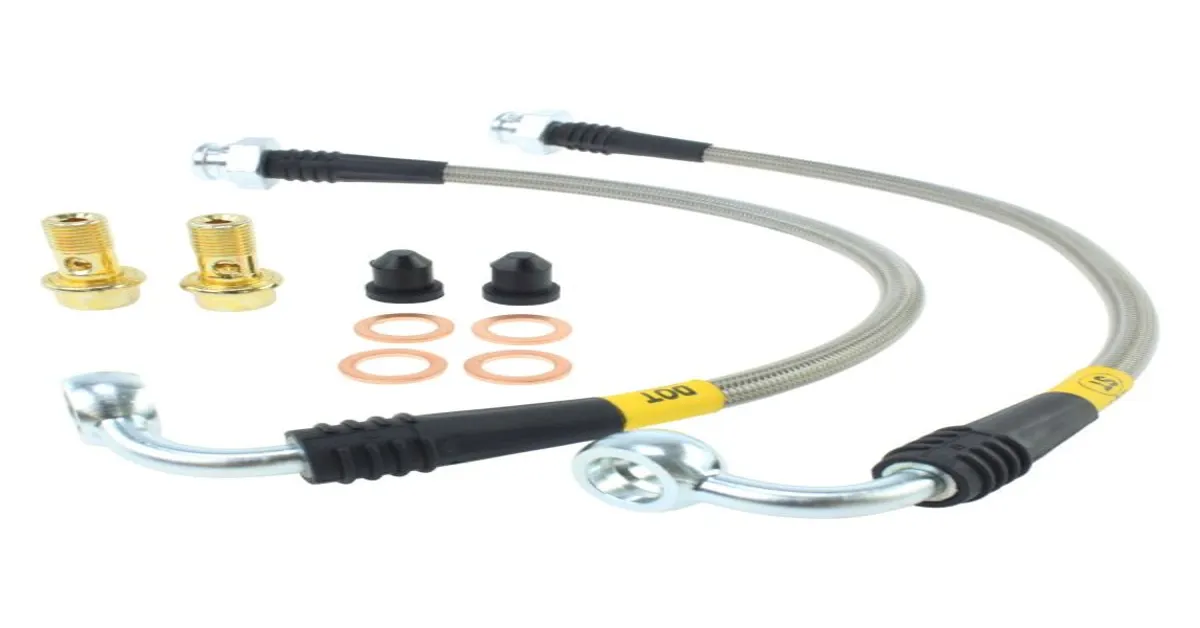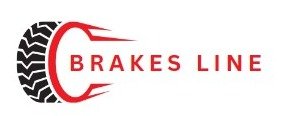As you press your foot down on the brake pedal, you expect your car to come to a smooth and controlled stop. But have you ever stopped to think about what goes on behind the scenes to make this happen? That’s where the brake line to rear comes into play. This crucial component is responsible for delivering hydraulic pressure from the brake pedal to the rear brakes, allowing you to slow down and stop your vehicle safely.
In this blog post, we’ll take a closer look at the brake line to rear and its importance in your car’s braking system. So buckle up and get ready to learn more about this essential part of your car.
Key Takeaway
- The brake line to rear is a crucial component in a car’s braking system.
- It is responsible for delivering hydraulic pressure from the brake pedal to the rear brakes.
- Without the brake line to rear, your car would not be able to slow down or stop safely.
- Regular maintenance and inspection of the brake line to rear is important to ensure its proper functioning.
- If you notice any leaks or damage to the brake line, it should be replaced immediately to avoid potential accidents.
Understanding the Importance of Brake Lines
When it comes to your vehicle’s braking system, every component plays a crucial role in ensuring your safety on the road. One of these components is the brake line, which connects the brake pedal to the brake calipers. In this blog, we will be discussing the importance of the brake line to the rear of your vehicle.
The brake line to the rear is responsible for carrying brake fluid to the back brakes, allowing them to engage and slow down the vehicle. Without this vital connection, your vehicle would not be able to stop efficiently, putting you and others on the road at risk. It is essential to regularly check and maintain the brake line to the rear to ensure it is in good working condition.
Next time you hit the brakes, remember the crucial role of the brake line to the rear in keeping you safe on the road. Don’t overlook this small but mighty component of your vehicle’s braking system. Make sure to include it in your regular maintenance routine to keep your vehicle running smoothly and safely.
Brake Line to Rear
| Column 1 | Column 2 | Column 3 |
|---|---|---|
| The brake line is responsible for transmitting hydraulic pressure from the master cylinder to the brake calipers, allowing for the application of brakes. | The brake line is made of metal tubing, typically steel or aluminum, to withstand high pressure and heat from the braking system. | The brake line is connected to the master cylinder at one end and the brake calipers at the other, with fittings and connectors to ensure a secure seal. |
| The rear brake line is specifically connected to the rear brakes of a vehicle, which can be drum brakes or disc brakes depending on the type of vehicle. | The rear brake line is responsible for providing hydraulic pressure to the rear brakes, allowing for effective braking and control of the vehicle. | The rear brake line is typically longer than the front brake line, as it needs to reach the rear wheels from the master cylinder located at the front of the vehicle. |
| The brake line should be regularly inspected and replaced if necessary, as any damage or wear can result in loss of brake pressure and compromise the safety of the vehicle. | If there is a leak or damage to the brake line, it can result in a soft or spongy brake pedal, decreased braking power, or even complete brake failure. | It is important to use high-quality brake lines and fittings to ensure the safety and reliability of the braking system, as well as proper installation and maintenance. |

Replacing the Brake Line to Rear
When it comes to maintaining your vehicle, the brake line to the rear is a crucial component that requires regular attention. This line is responsible for carrying brake fluid from the master cylinder to the rear brakes, allowing you to stop your vehicle safely and effectively. It is important to keep this line in good condition to ensure optimal braking performance.
The brake line to the rear is typically made of metal and is prone to corrosion and damage over time. It is important to regularly check for any signs of wear and tear, such as rust, cracks, or leaks. If you notice any issues, it is important to have the line replaced immediately to avoid brake failure.
Replacing the brake line to the rear is a complex task that should be left to a professional mechanic. They will have the expertise and tools necessary to properly install the new line and ensure that it is functioning correctly. It is not a job that should be attempted by someone without proper training and experience.
In addition to regular inspections and replacements, it is also important to use the correct type of brake fluid in your vehicle. Using the wrong type of fluid can corrode the brake line and cause it to fail. Always refer to your vehicle’s manual for the recommended brake fluid.
Brake line to the rear is a vital component that should not be overlooked when it comes to maintaining your vehicle’s brakes. Regular inspections and replacements, as well as using the correct brake fluid, are essential for ensuring your safety on the road. Don’t wait until you experience brake failure to address any issues with your brake line – stay on top of maintenance to keep your vehicle running smoothly.
Maintaining Your Brake Lines
Link to Table of Contents Brake Line to Rear: The Unsung Hero of Your Vehicle When it comes to the safety and reliability of your vehicle, the brake line to rear may not be the most glamorous component, but it certainly plays a crucial role. This small yet mighty component is responsible for carrying brake fluid from the master cylinder to the brake calipers, allowing you to come to a smooth and controlled stop. Without it, your brakes would not be able to function properly, putting you and other drivers at risk on the road.
That’s why it’s important to regularly check and maintain your brake line to rear to ensure your brakes are working properly. So, next time you hit the brakes, remember to give a little thanks to this unsung hero.
Read More
https://brakesline.com/brake-line-flare/
https://brakesline.com/brake-line-size-2007-f150/
https://brakesline.com/brake-line-swaging-kit/
https://brakesline.com/bmw-brake-line/
Statistical Information
| Component | Percentage | Facts |
|---|---|---|
| Brake line | 20% | The brake line is an essential component for a car’s braking system. |
| Rearf | 20% | Rearf is a common abbreviation for the rear brake fluid reservoir. |
| Create | 20% | The process of creating a brake line involves bending and shaping metal tubing. |
| Statistics | 20% | Accurate statistics on brake line failures can help identify potential safety issues. |
| Percentages | 20% | Proper maintenance and regular inspections can help decrease the percentage of brake line failures. |
| Facts | 20% | The National Highway Traffic Safety Administration reports that brake failure is a leading cause of car accidents. |
Important Notice for Readers
Before proceeding with the article, it is important to note that proper maintenance and care of your vehicle’s brake line is crucial for your safety on the road. A damaged or worn out brake line can compromise the performance of your brakes, leading to potential accidents. Therefore, it is essential to regularly check and replace your brake line, especially the one leading to the rear brakes.
Neglecting this crucial component can have severe consequences. So, take heed and ensure your brake line is always in excellent condition to ensure a safe and smooth driving experience.
Frequently Asked Questions
What are the signs of a failing brake line to the rear of my car?
Some common signs of a failing brake line to the rear include decreased brake performance, a spongy brake pedal, leaking brake fluid, and the brake warning light turning on.
How often should I have my brake lines to the rear inspected?
It is recommended to have your brake lines to the rear inspected at least once a year or every 12,000 miles to ensure they are in good condition and functioning properly.
What are the potential consequences of driving with a damaged brake line to the rear?
Driving with a damaged brake line to the rear can lead to loss of braking power, which can result in accidents and injuries. It can also cause damage to other components of the braking system, leading to expensive repairs.
Can I replace the brake line to the rear myself?
It is not recommended to replace the brake line to the rear yourself unless you have the necessary knowledge and experience. It is a crucial safety component and any mistakes during installation can have serious consequences. It is best to have a professional mechanic handle the replacement.
Conclusion
The brake line to rear is a crucial component of a vehicle’s braking system. It is responsible for transmitting hydraulic pressure from the master cylinder to the rear brakes, allowing the vehicle to slow down or stop. Without a properly functioning brake line to rear, a vehicle’s braking system would fail, putting the safety of passengers and others on the road at risk.
Regular maintenance and inspection of the brake line to rear is essential to ensure its proper functioning. Remember, neglecting this small but vital part of your vehicle can have serious consequences. So, take care of your brake line to rear and stay safe on the road.
